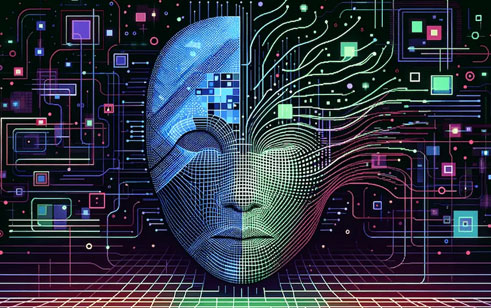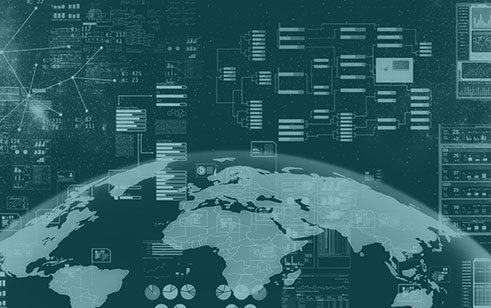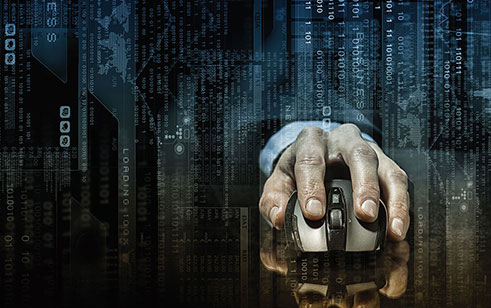The technique of scientific verification which is mainly supported by biology is ‘Biometric’ and utilized for IA i.e., Information Assurance. It is the analysis and measurement of people’s distinctive features, which comprises behavioral and physical attributes. Biometric authentication is the method mostly applied for recognition or for ascertaining persons. This modern way of identifying and authenticating humans will soon be replacing all the Identity Cards or Personal Identification Number (PIN). The most important factor of biometrics, as compared to others, is that it requires the physical presence of a person which cannot be forged. The method for Biometric authentication of a person is based on biological facts and data. The crucial basis is that each human will be precisely recognized by her or his natural (behavioral or physical) qualities.

The word biometrics is derived from two Greek words i.e., bio meaning life and metrics meaning to measure. Biometric authentication was initiated by Alphonse Bertillon which was later developed by Francis Galton. Biometrics can be divided into two kinds:- Behavioral and Physiological. Behavioral biometrics comprises of voice recognition, signature and keystroke. And, Physiological biometrics comprises of face recognition, Iris recognition, fingerprint, hand geometry and DNA. Biometrics is shaped up of these elements and aspects:-
The use of Biometric authentication dates back during the early 1900. The UK, US and France are the three countries where biometrics was used. And, it was Police of the respective countries that used the biometrics.

The method through which a person’s identity is authenticated by using biological data or by scanning some body parts is known as Biometric authentication. This method is used to defend various diverse types of arrangement, like a research site. The verification done using biometrics is considered to be the most perfect since no one can relocate the biological elements or attributes from one human to another. But, the conventional expenditure of Biometric authentication is making it a not possible preference for a lot of development schemes.
New technologies are making Biometric authentication more practically feasible for a range of different implementations. One of the regular and growing kinds of such technology is ‘face recognition.’ The devices used for face recognition are capable of identifying humans which can further be applied for various types of safety measures and verification. The next popular verification method done through biometrics is fingerprint. Whereas one method focuses on the features of the human eye there are other methods which involve the use of scanning various body parts.
The method through which a person’s identity is determined by using biological algorithms is known as biometric identification. In this identification process the main objective is to get an element of biometric data of the human. And that data can be anything like the image of a face, a voice record or the fingerprint. To identity one human such data is put through the Biometric authentication against the data that have been stored in some database. Identification done through biometrics relies on the distinctiveness of the feature being regarded upon. Like the fingerprints which are extremely inimitable are given more priority than voice record or a facial scan.Consistency of biometric aspects is an important factor on accepting the various methods of collecting biological data. One thing that will always change with time is the appearance of the face (or due to illness) but fingerprints never changes in one’s lifetime.
Before doing biometric identification the question that arises is “who are you?” On the other hand the question of “will you verify who you are” is met with implying the Biometrics authentication. The verification and the recognition, via biometrics, is gradually becoming a conventional resolution to set up adequate sense of security in our everyday life. Biometrics is used for enforcing law, in various defense activities and checking immigration. Biometric authentication is progressively moving on to the field of Healthcare and similar other programs. Beneficiaries of health insurance and medical care facilities can be identified individually accordingly they can receive what care they need. Even a country’s population can be regulated firmly using biometrics. The citizens who can exercise their voting rights can be also classified in one database.
Biometric authentication puts forward an extensive array of practices. It can be applied to a broad range of diverse fields, which can start from the security of a country to the security of each countryman. This technology is being used in identity management and also forensic identification. Some of the most common prevalent methods are fingerprint, palm print, iris recognition, face recognition and recognition based on DNA. Lately, there are studies being conducted to bring out fresh forms for Biometric authentication, like the thermograph of face and the shape of ear.
The most coveted and upcoming method of our times is Biometric authentication. It has very rapidly ascertained itself to be one of the significant means to authenticate and identify person in a trustworthy manner that too in a prompt approach. And in doing so it uses all the distinctive and exclusive characteristics found in a human body biologically. As of now, most of the applications are making use of Biometric authentication to identify and recognize.
To recognize or verify an individual supported by firm distinctive attributes is said to be vital code for Biometric authentication. In the field of document identification biometrics is gaining pace. When biometrics is blended well with existing technologies of security it can serve a bigger purpose.

As global election systems brace for the 2024 cycle, they face unprecedented threats from advancing AI technologies and escalating cybersecurity risks.
Learn More
In the digital age, social media has ascended as the paramount platform for individuals to disseminate opinions, amplify concerns, polarize communities, and craft propaganda.
Learn More
Social engineering attacks have emerged as a dominant method for cyber fraudsters to penetrate organizations.
Learn More
The banking, financial services, and insurance (BFSI) industries are undergoing a significant and rapid change driven by digitalization. This revolution is essential as organizations respond to evolving customer expectations, the need for superior business results, and increasing regulatory requirements.
Learn More
The World is growing at a rapid pace, and with that, advancements in information and communication technology are moving at a breakneck speed. In today's digital age, where information flows freely across the internet, the realm of law enforcement has undergone a unique transformation.
Learn More